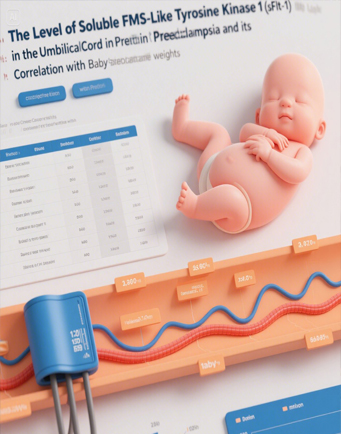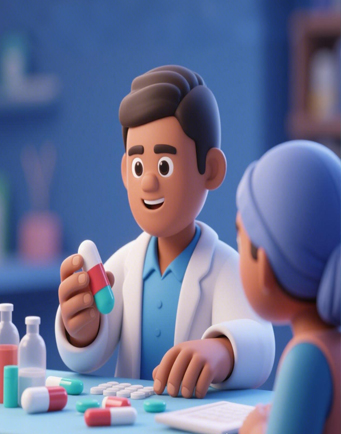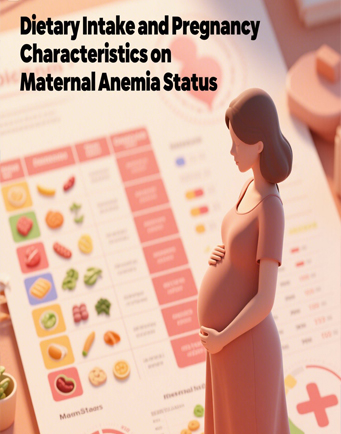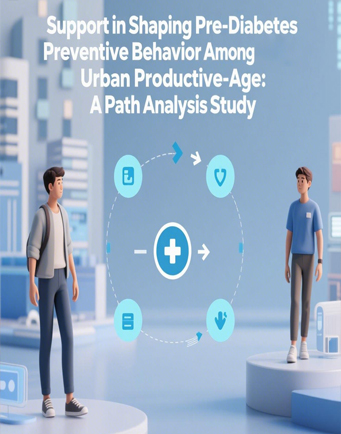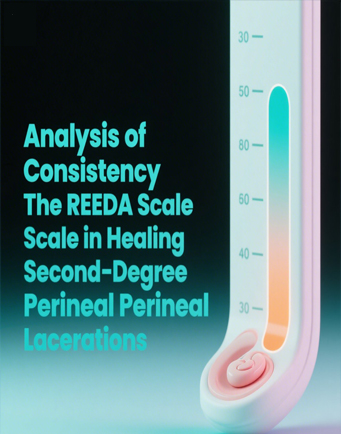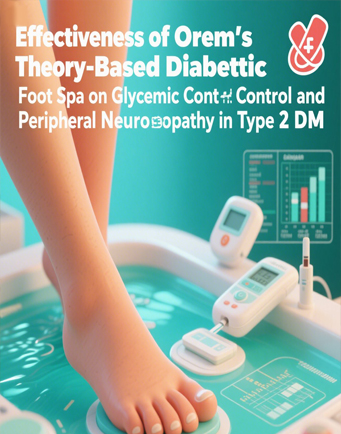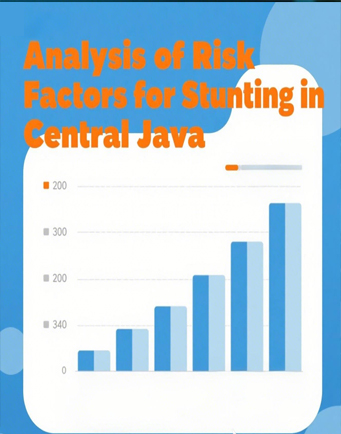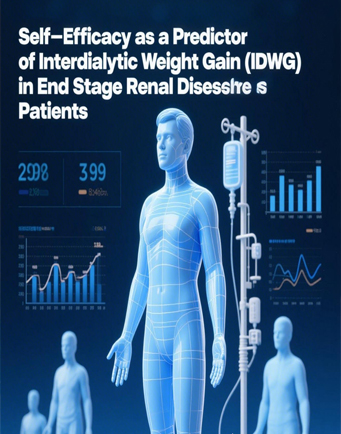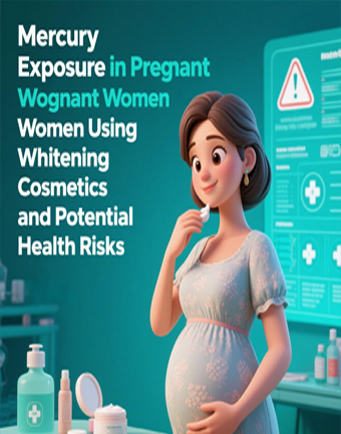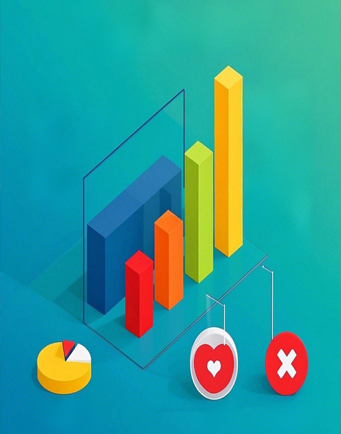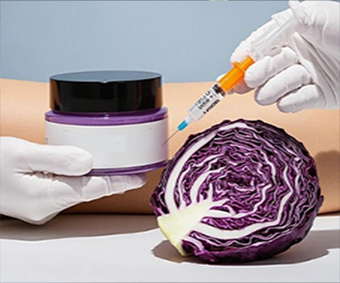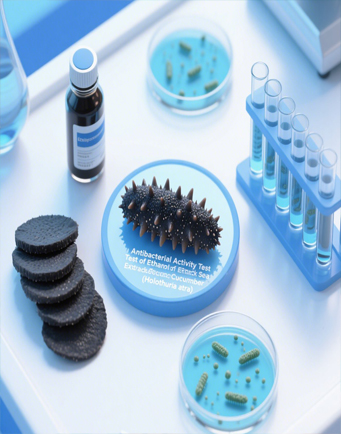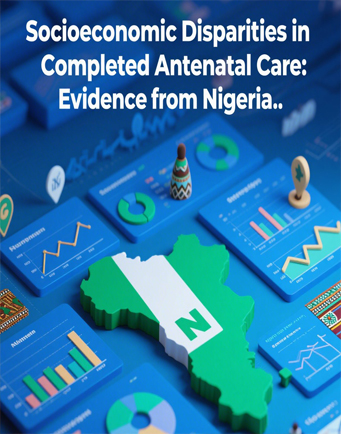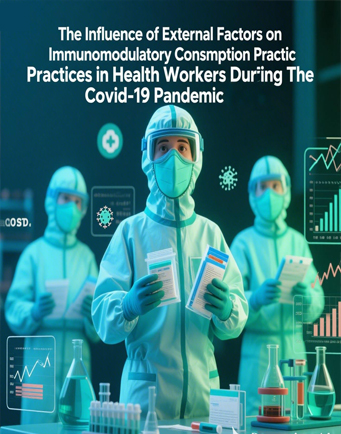The Effect of Air Pollution on Malondialdehyde, Superoxide Dismutase, and Lung Function of Traffic Police in Banjarbaru City
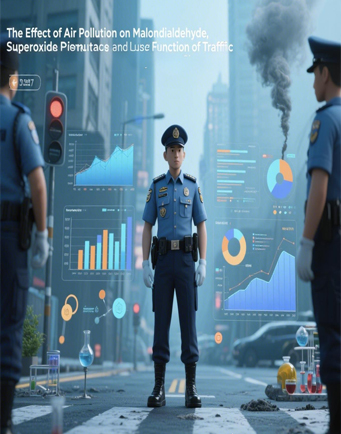
Downloads
Air pollution has a significant impact on lung health, especially for groups of workers who are directly exposed to pollution, such as traffic police. This study aims to evaluate the effect of air pollution on Malondialdehyde (MDA), Superoxide Dismutase (SOD), and lung function levels in traffic police in Banjarbaru City. The method used was observational analytic with a cross-sectional research design. This study involved two groups, namely traffic police and non-traffic police, with a purposive sampling technique. The subjects involved totaled 80 people, divided into 40 traffic police and 40 non-traffic police, with the criteria of traffic police who have worked for at least 5 years. Serum MDA and SOD levels and pulmonary function assessment using spirometry were performed in both groups. The results showed that MDA levels in traffic police were higher (184.75 ± 14.5 µM) compared to non-traffic police (178.4 ± 3.4 µM), while SOD levels in traffic police were lower (1.06 ± 0.384 units) compared to non-traffic police (1.22 ± 0.3 units). In addition, Forced Vital Capacity (FVC) and Forced Expiratory Volume in one second (FEV1) values in traffic police were lower, while the FEV1/FVC ratio showed no significant difference. Air pollution has a significant effect on increasing MDA, decreasing SOD, FVC, and FEV1 in traffic police. It is recommended to reduce air pollution exposure in this group through stricter pollution control policies and the use of respiratory protective equipment.
Amaliyah, R. A., Setiani, O., & Dangiran, H. L. (2018). Faktor-faktor yang berhubungan dengan kejadian gangguan fungsi paru pada polisi lalu lintas di Satlantas Polrestabes Semarang. Jurnal Kesehatan Masyarakat, 6(6), 305-314. Retreieved from: https://ejournal3.undip.ac.id/index.php/jkm/article/view/22191
Abidin, J., & Hasibuan, F. A. (2019). Pengaruh dampak pencemaran udara terhadap kesehatan untuk menambah pemahaman masyarakat awam tentang bahaya dari polusi udara. Prosiding Seminar Nasional Fisika Universitas Riau (SNFUR-4), 4(September), 3002-1-3002-7.
Aguscik, A., Ikob, R., & Putra, S. A. (2017). The Level of Malondialdehyde in People Exposed to Air Pollution. International Journal of Public Health Science (IJPHS), 6(1), 99-103. https://doi.org/10.11591/.v6i1.6539
Ayuningati, L. K., Murtiastutik, D., & Hoetomo, M. (2018). Perbedaan kadar malondialdehid (MDA) pada pasien dermatitis atopik dan nondermatitis atopik. Berkala Ilmu Kesehatan Kulit dan Kelamin, 30(1), 58-65. https://doi.org/10.20473/bikk.V30.1.2018.58-65
Bălă, G. P., Râjnoveanu, R. M., Tudorache, E., Motișan, R., & Oancea, C. (2021). Air pollution exposure—the (in) visible risk factor for respiratory diseases. Environmental Science and Pollution Research, 28(16), 19615-19628. https://doi.org/10.1007/s11356-021-13208-x
Ding, H., Jiang, M., Li, D., Zhao, Y., Yu, D., Zhang, R., ... & Piao, J. (2021). Effects of Real-Ambient PM2.5 Exposure on Lung Damage Modulated by Nrf2−/−. Frontiers in Pharmacology, 12, 662664. https://doi.org/10.3389/fphar.2021.662664
Doiron, D., de Hoogh, K., Probst-Hensch, N., Fortier, I., Cai, Y., De Matteis, S., & Hansell, A. L. (2019). Air pollution, lung function and COPD: results from the population-based UK Biobank study. European Respiratory Journal, 54(1), 1802140. https://doi.org/10.1183/13993003.02140-2018
Haro Girón, S., Monserrat Sanz, J., Ortega, M. A., Garcia-Montero, C., Fraile-Martínez, O., Gómez-Lahoz, A. M., ... & Álvarez-Mon, M. (2023). Prognostic value of malondialdehyde (MDA) in the temporal progression of chronic spinal cord injury. Journal of Personalized Medicine, 13(4), 626. https://doi.org/10.3390/jpm13040626
Hartley, A., Shun-Shin, M., Caga-Anan, M., Rajkumar, C., Nowbar, A. N., Foley, M., ... & Al-Lamee, R. K. (2021). The placebo-controlled effect of percutaneous coronary intervention on exercise induced changes in anti-malondialdehyde-LDL antibody levels in stable coronary artery disease: a substudy of the ORBITA trial. Frontiers in Cardiovascular Medicine, 8, 757030. https://doi.org/10.3389/fcvm.2021.757030
Hasan, H., & Maranatha, R. A. (2017). Perubahan Fungsi Paru pada Usia Tua: [Lung Function Alteration in Geriatric Patients]. Jurnal Respirasi, 3(2), 52–57. https://doi.org/10.20473/jr.v3-I.2.2017.52-57
He, L., Cui, X., Li, Z., Teng, Y., Barkjohn, K. K., Norris, C., ... & Zhang, J. J. (2020). Malondialdehyde in nasal fluid: a biomarker for monitoring asthma control in relation to air pollution exposure. Environmental Science & Technology, 54(18), 11405-11413. https://doi.org/10.1021/acs.est.0c02558
Huang, C. J., McAllister, M. J., Slusher, A. L., Webb, H. E., Mock, J. T., & Acevedo, E. O. (2015). Obesity-related oxidative stress: the impact of physical activity and diet manipulation. Sports medicine-open, 1, 1-12. https://doi.org/10.1186/s40798-015-0031-y
Husaini, H. (2016). Dampak pencemaran udara terhadap respons imun : teori dan praktik pada perajin logam. Yogyakarta: Gadjah Mada University Press.
IQAir. (2021). World Air Quality Report: Region & City PM2.5 Ranking. IQAir.
Jaggi, S., & Yadav, A. S. (2015). Increased serum malondialdehyde levels among cigarette smokers. The Pharma Innovation, 4(4): 94-96. Retrieved from: https://www.thepharmajournal.com/archives/?year=2015&vol=4&issue=4&ArticleId=594
Kahar, K., Lilis, S., & Soedjajadi, K. (2016). Particulate Matter (PM2.5) Increases MDA Levels Serum of Workers at Surabaya Bus Station. International Journal of Research in Advent Technology, 4(7), 12-15. https://doi.org/10.13140/RG.2.2.20370.40640
Karadsheh, N. S., Quttaineh, N. A., Karadsheh, S. N., & El-Khateeb, M. (2021). Effect of combined G6PD deficiency and diabetes on protein oxidation and lipid peroxidation. BMC Endocrine Disorders, 21(246), 1-5. https://doi.org/10.1186/s12902-021-00911-6
Li, Z., Liu, Q., Xu, Z., Guo, X., & Wu, S. (2020). Association between short-term exposure to ambient particulate air pollution and biomarkers of oxidative stress: a meta-analysis. Environmental research, 191, 110105. https://doi.org/10.1016/j.envres.2020.110105
Lorente, L., Martín, M. M., Abreu-González, P., Ramos, L., Argueso, M., Solé-Violán, J., ... & Jiménez, A. (2015). Serum malondialdehyde levels in patients with malignant middle cerebral artery infarction are associated with mortality. PloS one, 10(5), e0125893. https://doi.org/10.1371/journal.pone.0125893
Ma, M., Li, S., Jin, H., Zhang, Y., Xu, J., Chen, D., ... & Xiao, C. (2015). Characteristics and oxidative stress on rats and traffic policemen of ambient fine particulate matter from Shenyang. Science of the Total Environment, 526, 110-115. https://doi.org/10.1016/j.scitotenv.2015.04.075
Makwana, A. H., Solanki, J. D., Gokhale, P. A., Mehta, H. B., Shah, C. J., & Gadhavi, B. P. (2015). Study of computerized spirometric parameters of traffic police personnel of Saurashtra region, Gujarat, India. Lung India, 32(5), 457-461. https://doi.org/10.4103/0970-2113.164177
Milanzi, E. B., & Gehring, U. (2019). Detrimental effects of air pollution on adult lung function. Eur Respir J, 54(1), 1901122. https://doi.org/10.1183/13993003.01122-2019
Morales, M., & Munné-Bosch, S. (2019). Malondialdehyde: facts and artifacts. Plant physiology, 180(3), 1246-1250. https://doi.org/10.1104/pp.19.00405
Patil, P. J., Thakare, G. V., & Patil, S. P. (2013). Comparative study of lung function test of policemen in traffic control with those in general duty. Natl J Physiol Pharm Pharmacol, 3(2), 162-166. https://doi.org/10.5455/njppp.2013.3
Patil, R. R., Chetlapally, S. K., & Bagavandas, M. (2014). Global review of studies on traffic police with special focus on environmental health effects. International journal of occupational medicine and environmental health, 27, 523-535. https://doi.org/10.2478/s13382-014-0285-5
Paul, V., Mascarenhas, D. G., Khilar, S., & Fernandes, G. Impact of Air Pollution on the Lung Function of Traffic Policemen in Mangalore. International Journal of Research and Review, 8(1), 202-207.
Prasad, B. S., Vidyullatha, P., Venkata, R. P., Tirumala, V. G., Varre, S., Penagaluru, U. R., ... & Penagaluru, P. R. (2013). Evaluation of oxidative stress and DNA damage in traffic policemen exposed to vehicle exhaust. Biomarkers, 18(5), 406-411. https://doi.org/10.3109/1354750X.2013.801517
Ramdhan, D. H., Fajriyah, N., & Yuniarti, A. (2020). Pajanan Personal PM2.5 dan Perubahan Biokimia Darah pada Petugas Penyapu Jalan. Jurnal Kesehatan Lingkungan Indonesia, 19(2), 89–94. https://doi.org/10.14710/jkli.19.2.89-94
Romieu, I., Barraza-Villarreal, A., Escamilla-Nuñez, C., Almstrand, A. C., Diaz-Sanchez, D., Sly, P. D., & Olin, A. C. (2008). Exhaled breath malondialdehyde as a marker of effect of exposure to air pollution in children with asthma. Journal of Allergy and Clinical Immunology, 121(4), 903-909. https://doi.org/10.1016/j.jaci.2007.12.004
Rosyidah, M. (2016). Polusi udara dan kesehatan pernafasan. Integrasi: Jurnal Ilmiah Teknik Industri, 1(2), 1-5.
Sasikumar, S., Maheshkumar, K., Dilara, K., & Padmavathi, R. (2020). Assessment of pulmonary functions among traffic police personnel in Chennai city-A comparative cross-sectional study. Journal of Family Medicine and Primary Care, 9(7), 3356-3360. https://doi.org/10.4103/jfmpc.jfmpc_1126_19
Sheilaadji, M. U., Listiawan, M. Y., & Ervianti, E. (2019). Hubungan Kadar Antioksidan Superoxide Dismutase (SOD) dengan Indeks Bakterial (IB) pada Pasien Kusta Baru Tipe Multibasiler (MB) tanpa Reaksi. Berkala Ilmu Kesehatan Kulit dan Kelamin, 31(3), 200–209. https://doi.org/10.20473/bikk.V31.3.2019.100-109
Simanjuntak, E. J., & Zulham, Z. (2020). Superoksida Dismutase (SOD) dan radikal bebas. Jurnal Keperawatan Dan Fisioterapi (JKF), 2(2), 124-129. https://doi.org/10.35451/jkf.v2i2.342
Svartengren, M., Cai, G. H., Malinovschi, A., Theorell-Haglöw, J., Janson, C., Elmståhl, S., ... & Lindberg, E. (2020). The impact of body mass index, central obesity and physical activity on lung function: results of the EpiHealth study. ERJ Open Research, 6(4), 1–10. https://doi.org/10.1183/23120541.00214-2020
Wang, Y., Branicky, R., Noë, A., & Hekimi, S. (2018). Superoxide dismutases: Dual roles in controlling ROS damage and regulating ROS signaling. Journal of Cell Biology, 217(6), 1915-1928. https://doi.org/10.1083/jcb.201708007
Wirjatmadi, B., & Suryadinata, R. V. (2020). The alteration on malondialdehyde content on Wistar rats’ blood and lungs tissue to ward the exposure of electric cigarette smoke. Indian Journal of Public Health Research & Development, 11(3), 1881-1887.
Wispriyono, B., Jalaludin, J., Kusnoputranto, H., Pakpahan, S., Aryati, G. P., Pratama, S., ... & Novirsa, R. (2021). Glutathione (GSH) and superoxide dismutase (SOD) levels among junior high school students induced by indoor particulate matter 2.5 (PM2. 5) and nitrogen dioxide (NO2) exposure. Journal of Public Health Research, 10(4), 2372. https://doi.org/10.4081/jphr.2021.2372
World Health Organization. (2022a). Ambient (outdoor) air pollution [Internet]. World Health Organization. Retrieved from: https://www.who.int/news-room/fact-sheets/detail/ambient-(outdoor)-air-quality-and-health
Xing, Y. F., Xu, Y. H., Shi, M. H., & Lian, Y. X. (2016). The impact of PM2. 5 on the human respiratory system. Journal of thoracic disease, 8(1), E69-E74. https://doi.org/10.3978/j.issn.2072-1439.2016.01.19
Yadav, O. P., Pun, M., Mahotra, N. B., & Rana, B. S. (2022). Spirometric Evaluation of Effect of Air Pollution on Pulmonary Functions of Traffic Police in Kathmandu Valley. Janaki Medical College Journal of Medical Science, 10(2), 4-10. https://doi.org/10.3126/jmcjms.v10i2.47849
Zhang, L., Crowley, G., Haider, S. H., Zedan, M., Kwon, S., & Nolan, A. (2016). Air pollution and lung function loss: the importance of metabolic syndrome. Austin journal of pulmonary and respiratory medicine, 3(2), 1-6. Retrieved from: https://pmc.ncbi.nlm.nih.gov/articles/PMC5114002/
Copyright (c) 2025 JURNAL INFO KESEHATAN

This work is licensed under a Creative Commons Attribution-NonCommercial-ShareAlike 4.0 International License.
Copyright notice
Ownership of copyright
The copyright in this website and the material on this website (including without limitation the text, computer code, artwork, photographs, images, music, audio material, video material and audio-visual material on this website) is owned by JURNAL INFO KESEHATAN and its licensors.
Copyright license
JURNAL INFO KESEHATAN grants to you a worldwide non-exclusive royalty-free revocable license to:
- view this website and the material on this website on a computer or mobile device via a web browser;
- copy and store this website and the material on this website in your web browser cache memory; and
- print pages from this website for your use.
- All articles published by JURNAL INFO KESEHATAN are licensed under the Creative Commons Attribution 4.0 International License. This permits anyone to copy, redistribute, remix, transmit and adapt the work provided the original work and source is appropriately cited.
JURNAL INFO KESEHATAN does not grant you any other rights in relation to this website or the material on this website. In other words, all other rights are reserved.
For the avoidance of doubt, you must not adapt, edit, change, transform, publish, republish, distribute, redistribute, broadcast, rebroadcast or show or play in public this website or the material on this website (in any form or media) without appropriately and conspicuously citing the original work and source or JURNAL INFO KESEHATAN prior written permission.
Permissions
You may request permission to use the copyright materials on this website by writing to jurnalinfokesehatan@gmail.com.
Enforcement of copyright
JURNAL INFO KESEHATAN takes the protection of its copyright very seriously.
If JURNAL INFO KESEHATAN discovers that you have used its copyright materials in contravention of the license above, JURNAL INFO KESEHATAN may bring legal proceedings against you seeking monetary damages and an injunction to stop you using those materials. You could also be ordered to pay legal costs.
If you become aware of any use of JURNAL INFO KESEHATAN copyright materials that contravenes or may contravene the license above, please report this by email to jurnalinfokesehatan@gmail.com
Infringing material
If you become aware of any material on the website that you believe infringes your or any other person's copyright, please report this by email to jurnalinfokesehatan@gmail.com.



